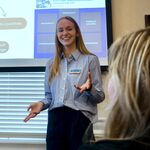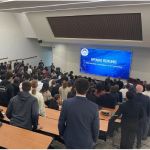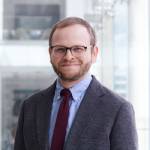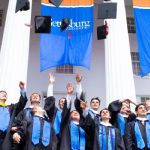
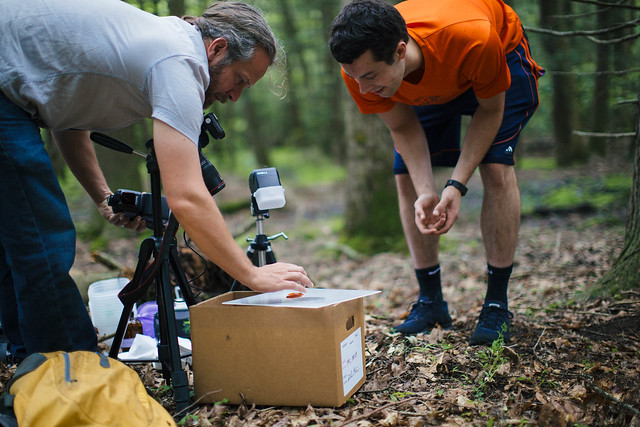
View photos from this year's fellowship students above or on Flickr, and keep up to date with their research through the X-SIG blog.
“Every student who wants to do research should be able to do research,” said Physics Prof. Kurt Andresen, the coordinator of the Cross-Disciplinary Science Institute at Gettysburg, or X-SIG for short.
The goal of the X-SIG program is to help students become research ready, research active, and research connected. As the name suggests, the program provides a variety of research and learning opportunities that are designed to facilitate the crossing of boundaries between scientific disciplines.
“To me, that is why you come [here],” continued Andresen. “Bigger schools also have undergraduate researchers, but it’s one professor for every 100 students. We have made a concerted effort to be able to provide impactful research experiences. It’s something we do exceptionally well.”
Previously supported by funding from the Howard Hughes Medical Institute (HHMI), the X-SIG program is funded collectively by several endowed funds: The John McCrea and Marion Ball Dickson Professorship and Science Fund, the Eric E. Kolbe ’65 Student-Faculty Research Fund, The Mary Catherine Albaugh (Class of 1954) Chemistry Fund for Student Research, The Dr. Randall S. Alberte Fund for Student/Faculty Research in Biology, The Dr. Allan Cormack Summer Student Research Grant in Physics, and The Leslie R. Schweizer ’45 and Thomas C. Schweizer ’73 Summer Research Grant in Physics.
These funds support summer research fellowships for students on-campus and off-campus, conference and professional development opportunities for faculty and students, and the X-SIG interdisciplinary seminar series, to name a few. This past summer, 67 students, a record number, received research funding and support.
President Janet Morgan Riggs ’77 met with Eric Kolbe ’65 to share summaries from students about the impact these research experiences as “Kolbe Fellows” have had on their learning.
“Eric’s face simply lit up when he heard the level of research and breadth of projects the Kolbe Fellows were working on,” said Riggs. “For many students, this is their first opportunity to conduct sophisticated hands-on research under the close mentorship of a faculty member. Our generous donors, like Eric, are providing rich learning experiences that ignite new interests and often transform the way a student thinks.”
Research opportunities like these provide many students with a first look at desired careers. For example, Theresa Blickenstaff ’20 said that her research on the impact of exercise on the function of the gastrointestinal tract has influenced her interest in pursuing medical school. Her research—grounded deeply in principles of anatomy and physiology—is an opportunity to learn how research directly impacts helping people while honing her skills.
The X-SIG program also offers support by way of funding the cost of lab supplies, providing housing, and sending students to national conferences. “The funding provided the means for me to apply knowledge learned from my classes into the laboratory environment,” said Marana Tso ’20. She is currently isolating bacteriophages, viruses that infect bacteria, and analyzing their genomes to obtain insight on genes that influence a phage's host range. While her research was in progress, “new concepts would emerge,” Tso said, “making the experience both educational and practical.”
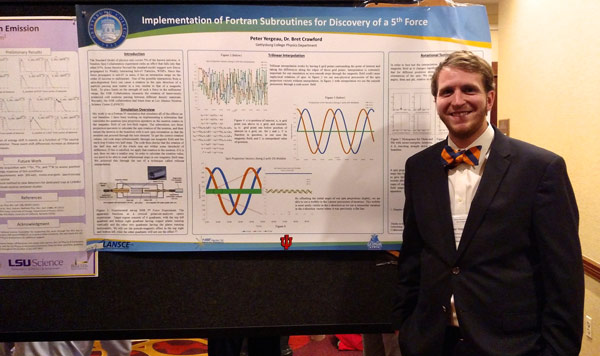 Through the support of X-SIG, students are exposed to cutting-edge research topics and provided with the hands-on experience of working in a laboratory. Traditionally, undergraduates wouldn’t have this exposure to a problem-based approach across scientific fields until graduate school or later. “Without X-SIG funding I would not have been able to do research as an undergrad,” said Peter Yergeau ’18. His project looks at neutrons and how they spin to see if there are more than just the four fundamental forces. “The program has allowed me to go to a conference and present a poster on my research. It also provided insight into what part of physics I want to go into after college.”
Through the support of X-SIG, students are exposed to cutting-edge research topics and provided with the hands-on experience of working in a laboratory. Traditionally, undergraduates wouldn’t have this exposure to a problem-based approach across scientific fields until graduate school or later. “Without X-SIG funding I would not have been able to do research as an undergrad,” said Peter Yergeau ’18. His project looks at neutrons and how they spin to see if there are more than just the four fundamental forces. “The program has allowed me to go to a conference and present a poster on my research. It also provided insight into what part of physics I want to go into after college.”
Similarly, Marion McKenzie ’19 said: “I wouldn’t have been able to spend my time both on campus and in Iceland conducting fieldwork this past summer without X-SIG.” As a result of her research in Iceland, McKenzie discovered a contradiction in a previously published figure regarding the differentiation of the flow of icebergs. She will present her findings at an upcoming conference in March, the Arctic Workshop in Colorado, with support from X-SIG.
“My ability to conduct field work as well as understand spatial analysis of geography has grown immensely through this experience,” she said. “The opportunity to meet potential advisors at this workshop is critical to my growth as a scientist—these connections have introduced me to new ideas and taught me how to ask new questions.”
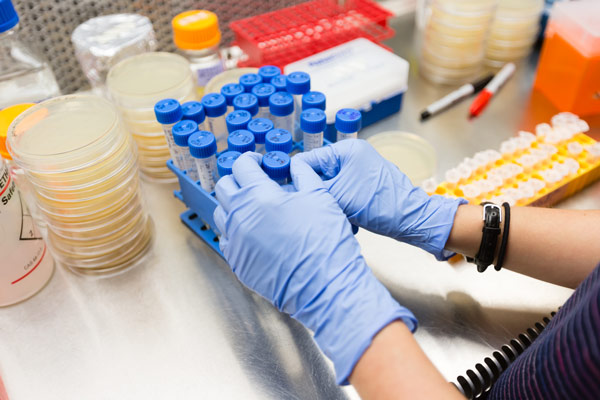 Through the X-SIG program, new courses have also been created, with a focus on increasing collaboration between scientific disciplines. Take for example, Drugs and Cells, which fuses chemistry and biology, or Salty and Fatty, a product of a collaboration between physics and chemistry.
Through the X-SIG program, new courses have also been created, with a focus on increasing collaboration between scientific disciplines. Take for example, Drugs and Cells, which fuses chemistry and biology, or Salty and Fatty, a product of a collaboration between physics and chemistry.
As a result, “our professors are constantly talking to one another, and our students are talking to and living with one another,” said Professor Andresen.
“The X-SIG program has provided me with all of these opportunities to expand my own skill set as well as gain an understanding and appreciation for other STEM subjects,” said McKenzie.
Learn more about how your gift will allow Gettysburg to expand our commitment to active and engaged learning through programs like X-SIG.
